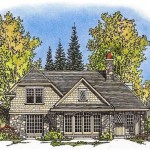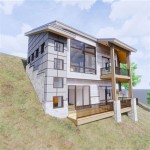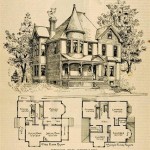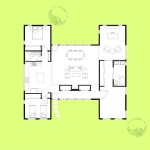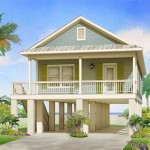10 Bedroom House Plans: Design Your Dream Home Free Online
Designing a home, especially one as substantial as a 10-bedroom house, requires careful planning and attention to detail. The scale of such a project necessitates a well-thought-out floor plan that balances functionality, aesthetics, and the needs of its occupants. The availability of free online resources for creating these plans has democratized the design process, allowing prospective homeowners to explore various layouts and architectural styles before committing to a final build. This article will delve into key considerations, resources, and design principles relevant to creating a 10-bedroom house plan using online tools.
One of the primary advantages of utilizing free online house plan designers is the ability to visualize different configurations without incurring significant costs. These tools often provide 2D and 3D renderings that allow individuals to experiment with room placement, square footage allocation, and overall spatial relationships. The process empowers stakeholders to participate actively in the design phase, ensuring the final blueprint aligns with their specific requirements.
Understanding Spatial Needs and Functionality
Before embarking on the design process, a thorough understanding of the house's intended use is essential. A 10-bedroom house can serve diverse purposes, ranging from a large family residence to a multi-generational home or even a potential bed and breakfast. The intended purpose will significantly influence the layout, flow, and amenities incorporated into the design.
For a large family, the bedrooms should be strategically positioned to provide privacy and quiet zones. Common areas, such as the living room, dining room, and kitchen, should be spacious and conducive to social interaction. The inclusion of multiple bathrooms, perhaps en-suite for some bedrooms, is crucial for accommodating a larger number of residents. Additional considerations might include a dedicated playroom, home office, or media room, depending on the family's lifestyle.
In a multi-generational home, accessibility becomes a paramount concern. Ensuring that at least one bedroom and bathroom are easily accessible for individuals with mobility limitations is a critical design element. Furthermore, creating distinct living spaces that cater to different age groups can foster harmony and independence within the household. This might involve designing separate living rooms or recreational areas to accommodate varying interests and preferences.
If the house is intended as a bed and breakfast, the focus shifts towards creating a welcoming and comfortable environment for guests. Each bedroom should be designed with privacy and amenities in mind, including en-suite bathrooms, comfortable furnishings, and adequate storage space. Additionally, the design should incorporate a communal dining area, a guest lounge, and potentially outdoor spaces for relaxation and enjoyment. Careful consideration should be given to zoning regulations and accessibility requirements for commercial establishments.
Leveraging Free Online Design Tools
A plethora of free online resources can assist in creating a 10-bedroom house plan. These tools range from basic 2D floor plan creators to more sophisticated 3D modeling software. While the features and functionalities may vary, they all offer a platform for users to experiment with different layouts and architectural styles.
Many online platforms offer pre-designed templates that can serve as a starting point for the design process. These templates can be customized to fit specific requirements, providing a convenient way to establish the basic structure and layout of the house. Users can then modify the dimensions, add or remove walls, and incorporate specific features to personalize the design.
When selecting an online design tool, it is essential to consider its ease of use, available features, and compatibility with different operating systems and devices. Some tools may require registration or subscription to access certain functionalities, while others are entirely free to use. It is advisable to explore several options and choose the tool that best suits individual needs and skill levels.
Most online design tools offer a drag-and-drop interface, allowing users to easily add walls, doors, windows, and furniture to the floor plan. These tools also typically provide a library of symbols and objects that can be used to represent various architectural elements and fixtures. The ability to visualize the design in 3D is a valuable feature that allows users to gain a better understanding of the spatial relationships and overall aesthetic of the house.
Furthermore, some online platforms offer collaboration features that enable multiple users to work on the same design simultaneously. This can be particularly useful when designing a house with input from multiple family members or stakeholders. The ability to share designs and provide feedback can streamline the design process and ensure that everyone's needs are met.
Key Design Considerations for Large Homes
Designing a 10-bedroom house presents unique challenges related to scale, circulation, and functionality. The layout must be carefully considered to ensure a comfortable and efficient living environment for all occupants. Several key design principles should be taken into account when creating the floor plan.
Circulation and Flow: Efficient circulation is crucial in a large house to minimize travel distances and ensure easy access to different areas. The layout should prioritize clear pathways and avoid creating bottlenecks or dead ends. Consider the flow of traffic between different zones, such as bedrooms, bathrooms, living areas, and the kitchen. A well-designed circulation pattern will contribute to a more functional and enjoyable living experience.
Zoning and Privacy: Strategically zoning different areas of the house can enhance privacy and minimize noise disturbances. Grouping bedrooms together and separating them from noisy areas, such as the living room or kitchen, can create a more peaceful environment. Consider incorporating sound insulation materials to further reduce noise transmission between rooms. The layout should also provide opportunities for individual privacy, such as dedicated reading nooks or home offices.
Natural Light and Ventilation: Maximizing natural light and ventilation is essential for creating a healthy and comfortable living environment. Position windows strategically to capture sunlight and promote airflow throughout the house. Consider incorporating skylights or light wells to bring natural light into interior spaces. Proper ventilation can help to reduce moisture buildup and improve indoor air quality. The orientation of the house on the lot should also be taken into account to optimize solar gain and minimize heat loss.
Storage and Organization: Adequate storage is a critical consideration in a large house. Plan for ample closet space in each bedroom, as well as additional storage areas throughout the house. Consider incorporating built-in storage solutions, such as shelving units or cabinets, to maximize space and organization. A well-organized house will be more functional and easier to maintain. Additionally, allocate space for specialized storage needs, such as sports equipment, seasonal decorations, or hobby supplies.
Accessibility and Universal Design: Incorporating accessibility features into the design can make the house more comfortable and accommodating for individuals of all ages and abilities. Consider widening doorways and hallways to accommodate wheelchairs or walkers. Install grab bars in bathrooms and ensure that at least one bathroom is fully accessible. Incorporating ramps or elevators can provide access to different floors for individuals with mobility limitations. Universal design principles aim to create a living environment that is usable by everyone, regardless of their physical abilities.
Sustainability and Energy Efficiency: Designing a sustainable and energy-efficient house can reduce environmental impact and lower utility costs. Consider incorporating energy-efficient windows and insulation to minimize heat loss and gain. Install solar panels to generate renewable energy. Use water-efficient fixtures to conserve water. The orientation of the house on the lot should be taken into account to optimize solar gain and minimize heat loss. Sustainable design practices can create a more comfortable and environmentally responsible living environment.
In conclusion, designing a 10-bedroom house plan using free online resources offers a powerful and accessible way to visualize and customize a dream home. By carefully considering spatial needs, leveraging available tools, and adhering to key design principles, prospective homeowners can create a functional, aesthetically pleasing, and sustainable living environment that meets the unique requirements of their household.

My Dream Home Free Online Design 3d Floor Plans By Planner 5d

Humber House Mansion Plans Luxury

Luxury Plan 5 377 Square Feet 4 Bedrooms Bathrooms 1018 00203

Humber House Mansion Plans Luxury

Create House Plans All In One Roomsketcher

House Designs Your Dream Home Design Is Here

Top 15 House Plans Plus Their Costs And Pros Cons Of Each Design

Create House Plans All In One Roomsketcher

Small House Plans Popular Designs Layouts

The Black Creek 2 Beautiful Farmhouse Style House Plan 1062
Related Posts

